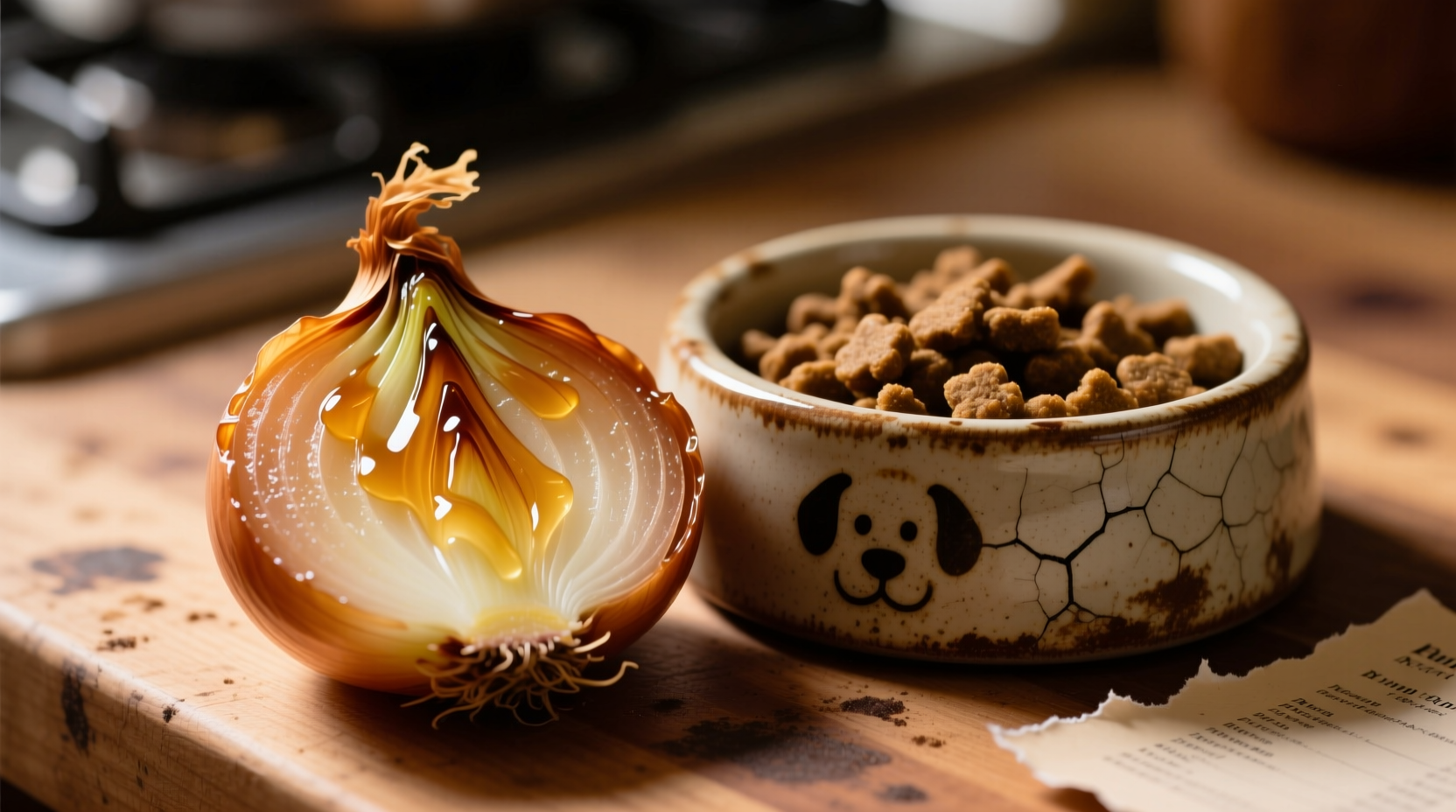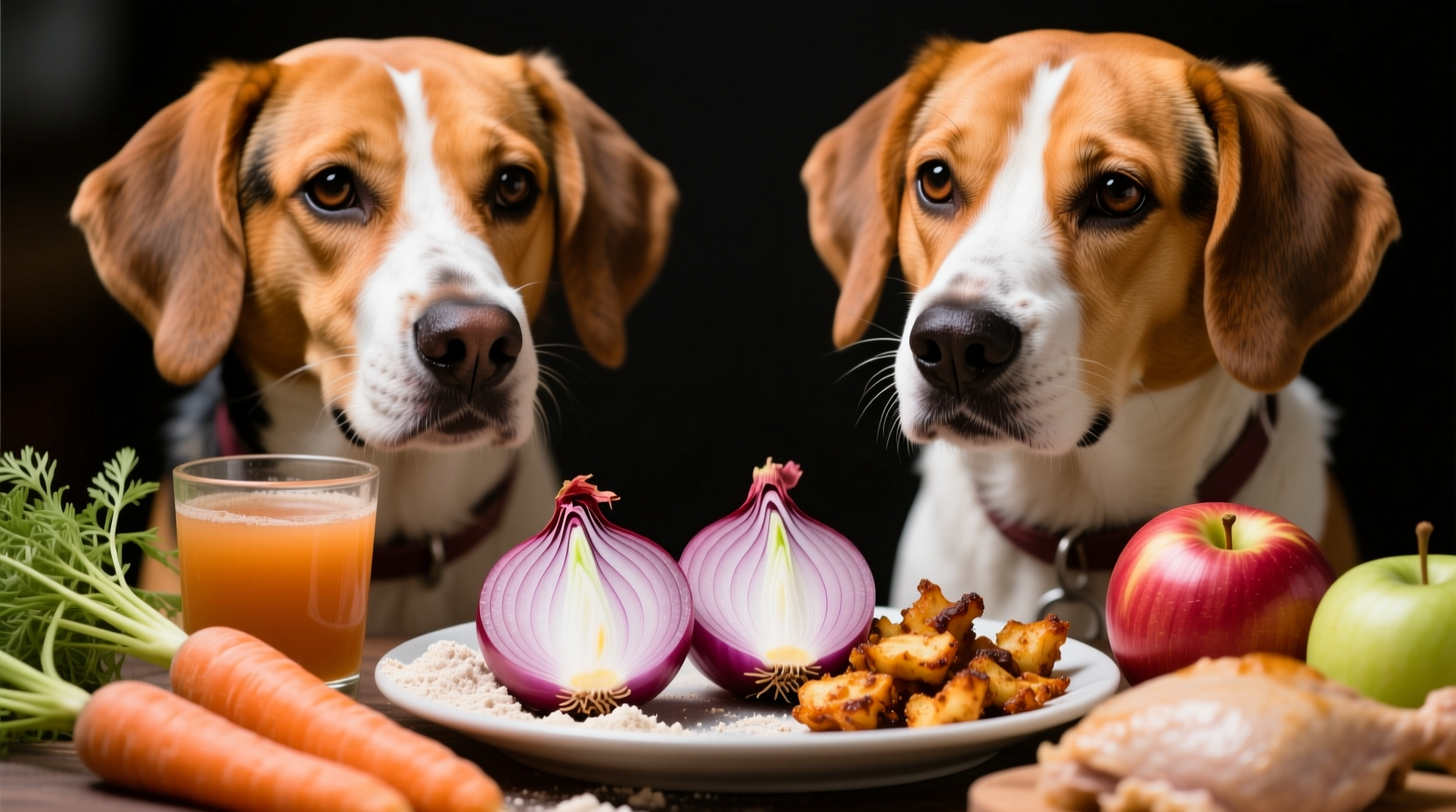Many pet owners mistakenly believe cooking makes onions safe for dogs, but the truth is far more dangerous. Unlike humans, dogs lack the enzyme necessary to break down N-propyl disulfide, the toxic compound present in all Allium family members—including onions, garlic, leeks, and chives. When dogs ingest cooked onions, this compound oxidizes their red blood cells, causing them to rupture and leading to potentially fatal anemia.
Why Cooked Onions Are Just as Dangerous as Raw Onions
Cooking doesn't neutralize onion toxicity—it merely changes the form. Whether sautéed in butter, caramelized for hours, or boiled in soup, the harmful compounds remain fully active. In fact, processed onion products like onion powder or dehydrated flakes contain concentrated toxins that pose an even greater risk.
| Onion Form | Toxicity Level | Common Sources |
|---|---|---|
| Raw onions | High | Salads, salsas, fresh preparations |
| Cooked onions | High | Gravies, soups, casseroles, meatloaf |
| Onion powder | Extreme | Seasoning blends, processed foods |
| Onion broth | Moderate-High | Stocks, sauces, drippings |
Symptoms Timeline: What Happens After Ingestion
Onion poisoning doesn't show immediate effects, creating dangerous false reassurance. The hemolytic process develops over time:
- 0-24 hours: Vomiting, diarrhea, abdominal pain (often mistaken for simple stomach upset)
- 24-72 hours: Lethargy, weakness, rapid breathing, pale gums (signs of developing anemia)
- 3-5 days: Dark urine (hemoglobinuria), jaundice, collapse (critical stage requiring emergency intervention)
According to the ASPCA Animal Poison Control Center, as little as 15-30 grams of onion per kilogram of body weight can trigger toxic effects. For a 20-pound dog, that's equivalent to just half a cup of cooked onions.

What to Do If Your Dog Ate Cooked Onions
Immediate action significantly improves outcomes. Follow this vet-recommended protocol:
- Calculate exposure: Estimate how much onion (in grams) your dog consumed relative to their weight
- Contact professionals: Call your veterinarian or the Pet Poison Helpline (800-213-6680) immediately
- Document symptoms: Note exact time of ingestion and any observed symptoms
- Follow instructions: Vets may induce vomiting within 2 hours or administer activated charcoal
- Prepare for monitoring: Expect blood tests to check for hemolysis and possible hospitalization
Never attempt home remedies like milk or hydrogen peroxide without veterinary guidance. The Veterinary Partner emphasizes that supportive care—including oxygen therapy and blood transfusions in severe cases—is the only effective treatment.
Preventing Onion Exposure in Your Home
Many common human foods contain hidden onion derivatives that pose risks:
- High-risk foods: Baby food (meat varieties often contain onion powder), pizza, pasta sauces, gravies, and processed meats
- Kitchen safety: Never leave cooking scraps unattended—onion ends and trimmings remain toxic
- Read labels: Check for onion derivatives like dehydrated onions, onion powder, or allium sativum
When sharing human food with dogs, stick to vet-approved options like plain cooked chicken or carrots. The American Kennel Club confirms no safe threshold exists for onion consumption in dogs—complete avoidance is essential.
When Cooked Onions Become an Emergency
Seek immediate veterinary care if your dog shows:
- Red or brown urine (indicates hemoglobin release from ruptured cells)
- Rapid heart rate exceeding 140 beats per minute
- Difficulty breathing or collapse
- Gums turning pale, white, or yellowish
These symptoms indicate advanced hemolytic anemia requiring urgent blood work and potentially transfusion. The Merck Veterinary Manual documents that untreated severe cases have mortality rates exceeding 25%.
Safe Flavor Alternatives for Dogs
Instead of risking toxic ingredients, enhance your dog's food with these vet-approved options:
- Parsley (fresh, in small amounts)
- Blueberries (antioxidant-rich)
- Pumpkin puree (fiber source)
- Unsalted bone broth (for picky eaters)
Always introduce new foods gradually and consult your veterinarian before making dietary changes, especially for dogs with existing health conditions.











 浙公网安备
33010002000092号
浙公网安备
33010002000092号 浙B2-20120091-4
浙B2-20120091-4